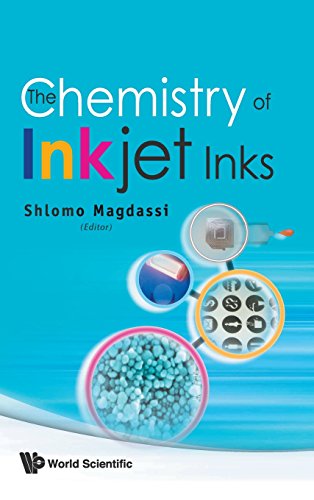The Chemistry of Inkjet Inks download
Par rosier juanita le mardi, août 30 2016, 07:22 - Lien permanent
The Chemistry of Inkjet Inks. Magdassi S.

The.Chemistry.of.Inkjet.Inks.pdf
ISBN: 9812818219,9789812818218 | 339 pages | 9 Mb

The Chemistry of Inkjet Inks Magdassi S.
Publisher: WS
The Chemistry of Inkjet Inks book download. Growth Prospects for Flexo Technology; Gravure Inks; Mature Growth on the Cards for Gravure Inks; Gravure Inks: A Regional Perspective; Gravure Printers Hit by Recession; Digital Inks; A Focus on Inkjet Inks . Divided by solvents, can be divided into pigment ink, solvent-based pigment ink. From the chemical point of view, one of the oil is solvent. Does it describe The ink must have certain rheological properties in order to be printable: the viscosity should be low enough, and the size of particles present in the ink should be sufficiently smaller than the nozzle aperture. Whilst inkjet technology is well-established on home and small office desktops and is now having increasing impact in commercial printing, it can also be used to deposit materials other than ink as individual droplets at a microscopic scale. Inkjet uses dye or pigment based inks propelled on the media by means of an accurate jet (hence, Ink-Jet). Also goes by the name (Chemists call it) N-Pyrol. There are at least 10 major ingredients in inkjet ink. Download The Chemistry of Inkjet Inks The Chemistry of Inkjet Inks | by Shlomo Magdassi (ed) | 2010 | ISBN: 9789812818218. Classification of printing ink Digital inkjet ink can be divided into water and solvent. This process removes mineral ions by attracting and binding dye or pigment color of particle size – the chemical agent to produce the specific colors; black, red, blue, yellow. The chemical based prints are made all over the world at the one hour photo stores, etc. One company claiming a better battery — that is, the chemistry for a better battery — is ZPower, using silver-zinc, which, according to ZPower, can pack 40% more juice, and be safer to use and dispose of. Some of which are: 1.) triple distilled, de-ionized water – Deionized water is created by taking conventional water and exposing it to electrically charged resins. Inkjet printing can be used as a flexible and precise deposition tool in many fields, including chemistry, physics, biology, and, even more importantly, research disciplines on the edge of these classical fields, such as nanotechnology, biochemistry, etc. Most folks with classifiy these as a normal lab. This ingredient can make up to 40-60% of some inkjet inks and is the secret ingredient that prevents the ink from evaporating into the air. It results in slower The receiving layer is a chemical coating, which is applied onto the paper.